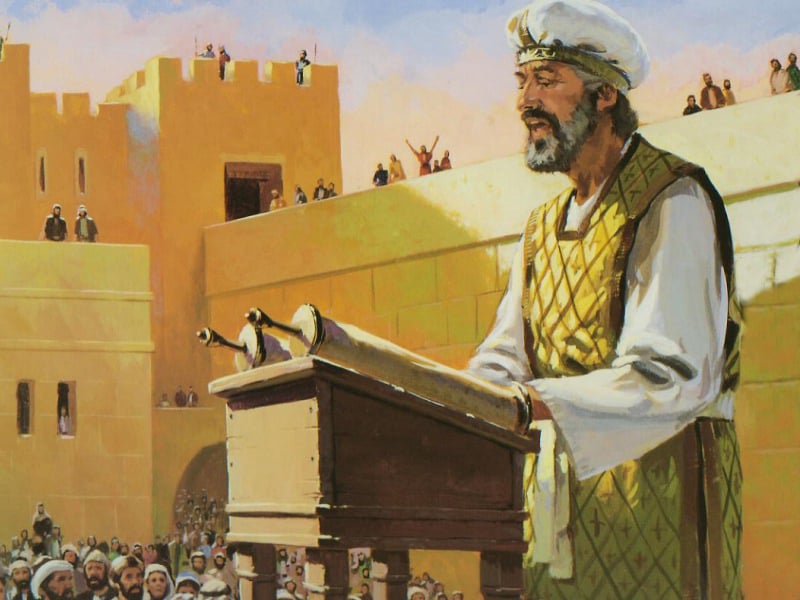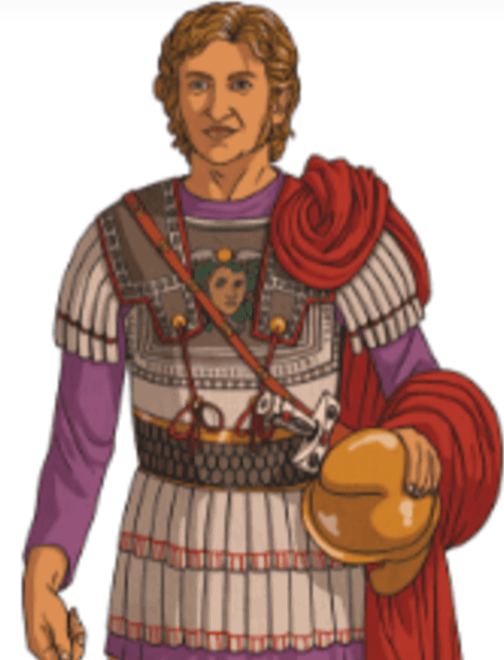Jewish History
What's Purim gotta do with it? The Restoration Period in Jewish History
by Dr. Ralph Graff
by Dr. Ralph Graff

Persian King Achashverosh
Judaism has survived for millennia in spite of continuous adversarial circumstances, among the greatest, the destruction of Solomon’s Temple. One of the most consequential periods in Jewish history was that between the Temple destruction and its re-creation, called the Restoration period. The best-known descriptions of that period are recorded in the Books of Ezra and Nehemiah, written by others many years after their time of occurrence. Were these descriptions “history or literature”? History is defined as the study of past events based on facts, while literature is the works of a specific time period often fictional.
Let us start with a simple description of what happened.
In 586 BC, Nebuchadnezzar, King of Babylonia defeated Judah, destroying Solomon’s Temple, and killing many of the citizens of Jerusalem, with forced emigration to Babylonia including some of the intelligentia, i.e. Ezekiel, Daniel and Mordecai. Nebuchadnezzar took the Temple Golden Cups and enshrined them in Babylon. A Jewish population remained in Judah; little is known about its activity. With the exception of Ezekiel’s prophecies and the writings of Daniel, little is known about Judaism in Neo Babylonia. Nebuchadnezzar ruled till 562BC. He was followed by three Kings and Prince Belshazzar. The book of Daniel tells us that in 539BC, Belshazzar had a celebration at which he drank from the Temple Golden cups. A written message appeared on the wall.

Ezra The priest
Daniel was summoned to interpret the message. He reported to Belshazzar his death and the downfall of his Kingdom at the hands of Darius the Meade. That night, the prediction was fulfilled. There is no other historic mention of Darius the Meade and history credits Cyrus for the Persian defeat. Midrash tells us that during that conflict, Vashti, Belshazzar’s daughter was kidnapped by Persia. in his first year, Cyrus issued a proclamation allowing Judeans and BenIaminites to return to Jerusalem to rebuild the Temple.
The Temple Golden Cups were given to Sheshbazzar (probably Shenazzar, son of Jehoiakin last King of Judah). Shortly thereafter administrative responsibility was assigned to Zerubbabel, son of Shealtil, nephew of Shenazzar, grandson of Jehoiakim, and religious responsibility to Joshua, son of Jozadak, the previous High Priest. They were critical in building the Alter and laying the foundation of the Temple. During the reign of Cyrus, a delay in construction occurred that Ezra attributed to resistance from the Samaritans. Following Cyrus, Persia was ruled by Cambyses, Smerdis, Xerxes I, Artaxerxes I, Xerxes II, Darius II, Artaxerxes II, Artaxerxes III, Arsis, and Darius III, who was defeated by Alexander the Great in 331 BC. Note that there were three Darius’s two Xerxes and three Artaxerxes.
The writings of Ezra and Nehemiah describe resumption and completion of construction of the Temple during the realm of Darius and the arrival of Ezra and Nehemiah as religious and administrative leaders and the rebuilding of the Jerusalem wall during the realm of Artaxerxes without indicating which Darius or Artaxerxes.

Alexander the Great
Was the temple in ruins for 22 years or over 100 years? When were Ezra and Nehemiah actually in Jerusalem? As noted, these books were written long after the actual occurrences with multiple writers and redactors. The writers attempt to portray History by citing references, but clearly, they express literary biases for the Persian Kings and against the Davidic Monarchy. But the description of Ezra’s bringing his modification of Torah to the people is considered history. “If the Torah had not been given to Moses, it would have been given to Ezra.”
The Book of Esther took place during the “Restoration Period”, during the reign of Persian King Achashverosh. The text does not include information that would identify the period. Most Biblical scholars favor Xerxes, but others prefer Artaxerxes I or II. It is difficult to identify history in the Book. Most believe it is primarily literature.
In summary, the destruction of Solomon’s Temple and the elimination of most of the Jerusalem population inflicted severe damage on Judaism. Because of destruction of Persian historical documents by the Greeks, much of what we know about Persia comes from Greek sources and they were greatly reduced when the Alexandrian library was destroyed in the great fire. Therefore, much of what we know of restoration period comes from religious sources.